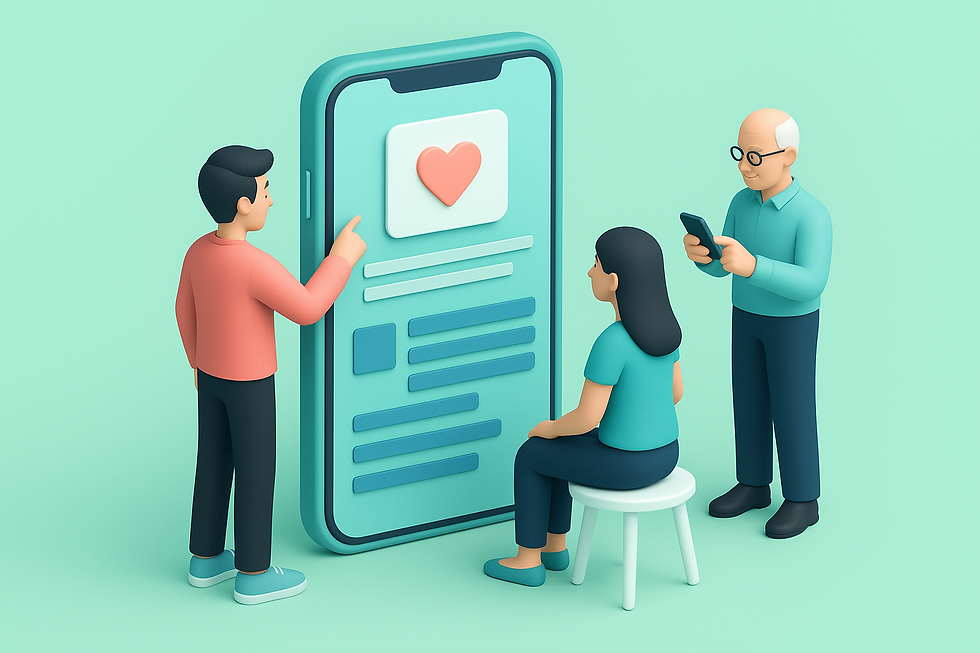How Product Discovery Minimizes Risk and Accelerates Success for New Projects
- Edson Pacheco
- Jun 12
- 3 min read

Many projects start out promising, well-intentioned, and technically robust — and yet fail. They are products that work but that no one wants. Solutions that solve problems that have never really been felt. Features that are developed with precision but never become relevant.
These pitfalls are hard to recognize during the initial excitement. The pressure to deliver quickly, show progress, and validate budgets pushes teams into premature execution—often before they even understand what really needs to be solved.
This is where Product Discovery shows its value. Not as a formal step or mandatory checklist, but as a way of thinking: a practice of investigation, validation, and alignment, before the actual writing of code begins.
The problem with starting with the solution
In an attempt to gain speed, it is common for teams to start projects with scopes in place, functionalities defined, and sprints scheduled — without testing the core hypotheses. This creates technically viable but strategically fragile products.
A study by CB Insights (2021) showed that the main cause of startup failure (42%) is the lack of real market demand — something that could have been detected with an active and structured discovery process. And according to McKinsey (2022), companies that adopt continuous validation practices can reduce the time between conception and traction of their products by up to 50% .
Avoiding this waste of time and effort doesn't require a bigger team. It requires asking better questions before building .
Discovering before building: a practice, not a ritual
Discovery is essentially a process of reducing uncertainty. It involves observing, listening, prototyping, testing—and repeating. The value is not in a final document, but in the learnings generated along the way.
Some common dynamics include:
• Interviews with users to map real behaviors and pains;
• Rapid prototyping of solution hypotheses;
• Qualitative and quantitative validation;
• Mapping of business objectives and value streams.
As Teresa Torres, a reference in Continuous Discovery, summarizes:
“Product discovery is not about figuring out what to build, but about figuring out what to solve.”
Maturity is understanding that what seems obvious rarely is.
Risk reduction and real acceleration
Contrary to popular belief, Discovery doesn’t delay — it learns lessons in advance that prevent future delays . Adjusting course before construction is cheaper, faster, and less traumatic than rewriting entire platforms later.
Among the main effects observed:
• Reduction of rework and irrelevant scope;
• Decisions more aligned with the value perceived by the user;
• More engaged teams because they understand the “why” behind the “what”;
• Clearer prioritization between effort and impact.
In our practice at VX Technology, we have observed that projects with structured discovery cycles tend to generate not only technically complete products, but solutions that make sense in the market . More than a design phase, it is a culture of listening, learning and continuous adaptation — especially relevant in contexts of high uncertainty.
A change of mindset
Treating Product Discovery as a stand-alone step is wasting its potential. True value comes when it becomes part of the ongoing cycle of building: discover, deliver, learn, and rediscover.
This model requires:
• Less focus on initial certainties, more openness to testing and learning;
• Institutional space for experimentation;
• Tools and processes that promote dialogue between product, technology and business.
It's not about slowing down, but about choosing the direction more clearly before accelerating .
Conclusion
If projects fail because they don’t meet a real need, discovery is the antidote. If they fail because of internal misalignment, discovery is the bridge. And if they fail because they scale too early, discovery is the necessary brake.

Product Discovery doesn’t guarantee success — but it significantly increases the chances that you’re building something worthwhile.
And in today’s digital landscape, this is already a powerful competitive advantage.
References
• CB Insights (2021). Top 20 Reasons Startups Fail
• McKinsey & Company (2022). How to Make Product Development More Predictable
• Teresa Torres (2021). Continuous Discovery Habits
• Standish Group (2020). Chaos Report: Project Success Rates
• Marty Cagan (2021). Empowered: Ordinary People, Extraordinary Products



Comments